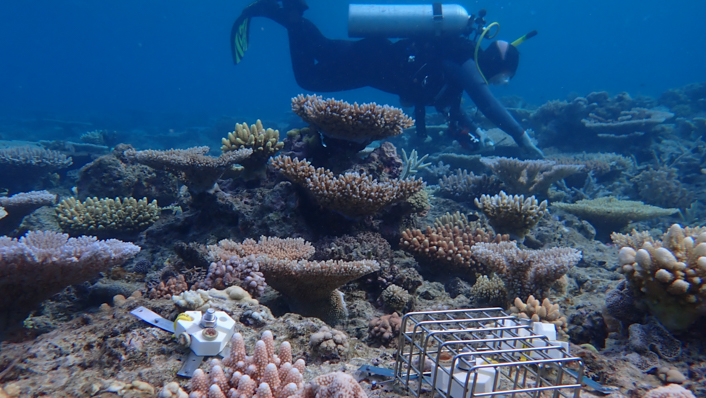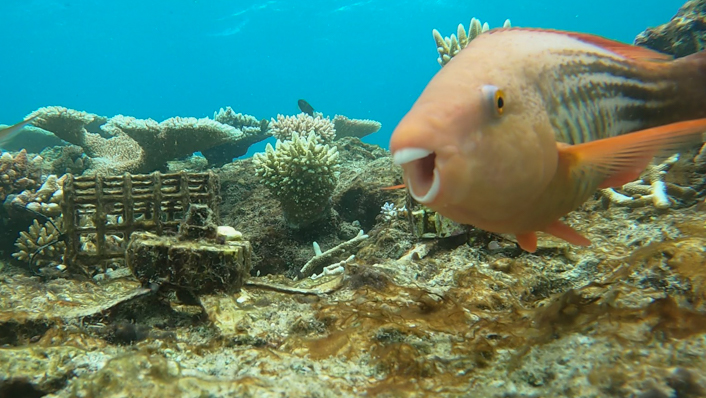In an effort to stop peckish fish from gobbling them up, scientists have developed special cradles to protect the young corals being used to rehabilitate reefs.
With coral reefs under stress from the effects of climate change and pollution, researchers are looking for ways to quickly restore the damage caused. One of these is coral seeding, in which lab-grown baby corals are placed into disturbed reefs, but there’s a problem – reef-dwellers like parrotfish can sometimes eat the tiny polyps before they’ve had a chance to make a difference.
Scientists from the Australian Institute of Marine Science (AIMS) and James Cook University (JCU) looked to how the devices used to seed the corals – the “cradles” – within the reef might be better designed to protect them.
To do so, the team placed over 340 seeding devices in the Davies Reef, a part of the wider Great Barrier Reef off the coast of Queensland, Australia. They used a mixture of devices, some with no protection, some with cages placed over them, and others with specially designed protective protrusions.

Inspecting the seeding devices.
Image credit: Carrie Sims/Australian Institute of Marine Science
After surveying the devices at the 2-day, 3-month, and 8-month mark, the researchers found that young corals covered by cages had the highest survival rates. But, they argue, it’s not the most effective method overall – cages can be costly, they’re not that scalable and once they’re removed, fish start grazing on the corals again.
“We need to find solutions that are effective at reducing the risk of predation on seeded corals, while also providing some access so the fish can graze and maintain the balance between the coral and competitive algae that also grow on the devices,” said lead author Taylor Whitman in a statement.
“We need to look at solutions that are scalable and not too labor intensive, while taking into account the differing environmental conditions on the reef. It’s a complex challenge!”
That balance, the team found, came from those seeding devices with side-facing crevices, which provided the growing corals with partial protection from the jaws of hungry fish.

Not today, parrotfish.
Image credit: Taylor Whitman/Australian Institute of Marine Science
Where the devices were placed also made a difference to survival.
“An abundance of food for the grazing fish also seemed to help our seeded corals. Locations with nutritious algae (including cyanobacteria) or hard corals resulted in less attention from the parrotfish on our babies,” explained Whitman.
Though the team says there’s still room for improving the devices, it’s hoped the study findings could be used to improve coral restoration strategies.
“The speed at which climate change impacts are unfolding on coral reefs around the world is alarming and current restoration efforts can’t keep up. We must pioneer a toolkit of solutions that are both inexpensive and scalable to help protect and restore these precious ecosystems,” said Dr Cedric Robillot, Executive Director of the Reef Restoration and Adaptation Program, which collaborated with the scientists.
“These coral seeding devices are game changing”.
The study is published in Scientific Reports.
Source Link: Baby Coral Cradles Could Stop Reef’s Young Getting Chomped By Fish